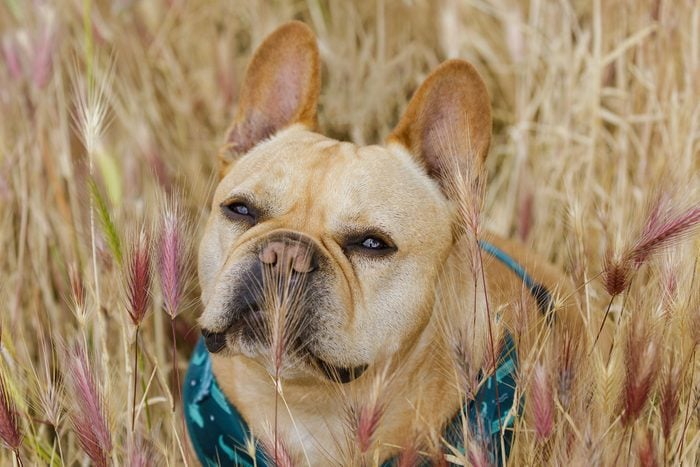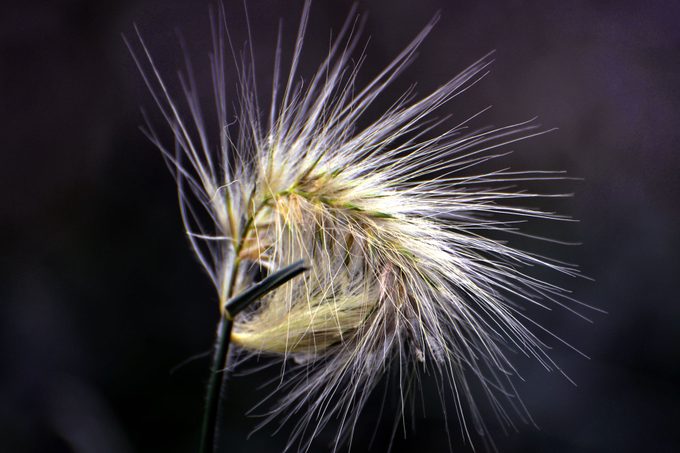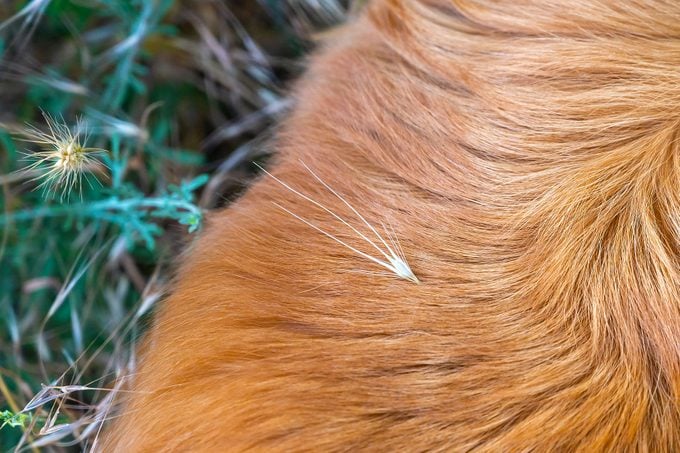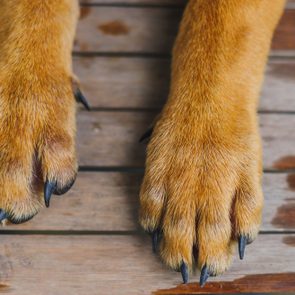Dog Owners Need to Be Extra Careful Outside This Summer—Here’s Why
Updated: Jun. 20, 2023

This common grass could lead to major vet bills. Here's how to avoid any incidents.
As dog owners, we have to watch out for a dozen different dangers in our own backyards. Whether that’s a busy lane of traffic, a suspicious stranger or toxic food on the sidewalk, the world can be a scary place for a curious dog. But there’s one common danger many pet owners miss when they take their dog out: foxtails. Here’s everything you need to know about this common plant to keep your dog safe this summer.
What are foxtails?
Foxtails are a type of grass that looks similar to a bushy, short wheat plant. They contain pointy, barbed seeds known as “grass awns” that have long, whisker-like hairs attached to help them disperse in the wind. Foxtails thrive in almost every part of the United States, including urban environments, posing a particular threat to dogs in the summertime.
Why are foxtails a danger to dogs?

Because of their unique pointy shape and barbed surface, grass awns can lodge into a dog’s fur and burrow into the dog’s skin. In the most benign cases, this causes irritation and potential infections. However, in the more severe cases, awns can dig all the way through the skin and get stuck internally. Some vets have found the awns in lung lobes during surgery, or that awns have broken open a dog’s eardrum.
Where do foxtail seeds lodge in a dog’s body?
Foxtails can really burrow anywhere on a dog, but some body parts are more vulnerable than others, such as the paws, nose, and ears. Dr. Ashley Bourgeois, a board-certified pet dermatologist in Portland, Oregon, explains that dogs can “step on these little barbs, get them embedded in their fur. We can also see them go in other areas of the body. Up the nose is not uncommon. As a dermatologist, I’ve taken quite a few out of ear canals.”
Which dogs are most commonly affected by foxtails?
Foxtails tend to impact dogs with long or fluffy fur most often. These fur types give the grass awns plenty of surface to latch onto, as well as limit visibility for owners. Additionally, working or hunting dogs that spend a lot of time off-trail may be particularly susceptible. Still, short-haired dogs are not immune. Even cats can be burdened by foxtails if they go outside.
How can I prevent foxtails from hurting my dog?
You can prevent foxtails from bothering your fur baby with a few key steps. First, always avoid walking your dog over obviously foxtail-laden terrain. Second, after each outdoor excursion, scan your dog for foxtails. Bourgeois suggests looking in between the dog’s toes and flipping back their ears for a full inspection. Third, comb your dog’s fur to find and dislodge any potential foxtails.
Lastly, know the signs that your dog may be in pain due to a possible foxtail implant. If your dog has any red or irritated patches of skin, is scratching their ears, or licking their paws, they’re trying to tell you something! Additionally, Bourgeois explains, “If [a dog] gets a grass awn up their nose, one of the signs that we’ll hear of is very abrupt sneezing. So, also just [look] for things that aren’t normal.”
What do I do if I see a foxtail on my dog?

If you suspect a foxtail awn has lodged itself into your dog, call your vet immediately. If left unattended, awns can burrow deeper, so time is of the essence. If caught immediately, vets can often simply remove the awn, flush the area, and monitor the dog. Because awns can cause irritation, monitoring is crucial. “I have had cases where I remove something, I think it’s looking pretty good, and then we’ll find out a week or two later there is some infection.” If the awn is deeply embedded, surgery may be necessary.
Fortunately, many of these more dire situations can be avoided with just a little extra attention. As Bourgeois says, “If [you]’re being proactive, preventative, [and] seeking care early if it’s not getting better or something acutely is happening, then you’re really going to prevent a lot of those extreme things from occurring.” Here’s to safe summer walks with your best friend!


